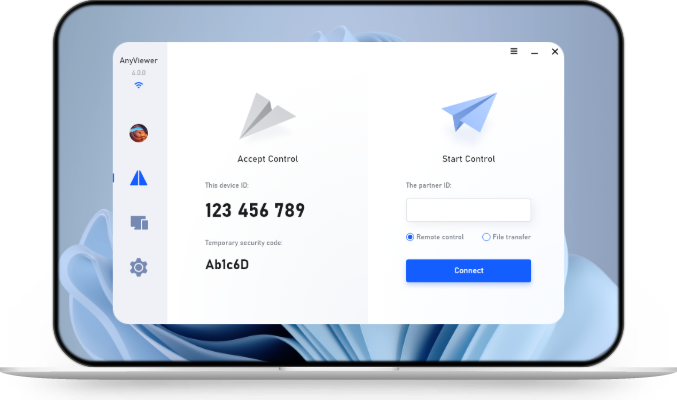Is Your Remote Control Sensor Functioning Properly? A Comprehensive Guide to Troubleshooting
Unlock the secrets of determining whether your remote control sensor is functioning properly with our comprehensive guide. Explore testing methods, common issues, and solutions to ensure seamless control of your devices. Plus, discover the versatility of AnyViewer for remote management.
Introduction
Your remote control is your gateway to convenience, but what if it stops working? In this guide, we'll explore how to troubleshoot and determine if your remote control sensor is functioning properly.
Understanding Remote Control Sensors
Types of Remote Control Sensors
Remote control sensors come in various types, including infrared (IR) sensors and radio frequency (RF) sensors. IR sensors are commonly used in traditional remote controls, while RF sensors are found in more advanced models and devices like smart TVs.
Functionality and Importance
The remote control sensor acts as the receiver for signals sent from the remote control. It translates these signals into commands that the device can understand, allowing you to control functions such as power, volume, and channel selection.
Testing Your Remote Control Sensor
Visual Inspection
Start by visually inspecting the remote control sensor on your device. Look for any physical damage or obstruction that may be affecting its functionality.
Using a Smartphone Camera
An effective way to test the functionality of your remote control sensor is by using a smartphone camera. Simply point the remote control at the camera and press any button while looking at the camera's screen. If the sensor is working properly, you should see a light or flash indicating that the signal is being transmitted.
Checking Signal Transmission
Another method is to use another device that can detect infrared signals, such as a digital camera or camcorder. Point the remote control at the camera lens and press a button. If the sensor is working, you should see a light emitting from the remote control when viewed through the camera.
Common Issues with Remote Control Sensors
Interference and Obstruction
One common issue that can affect remote control sensor functionality is interference from other devices or obstructions blocking the signal path. Ensure that there are no obstacles between the remote control and the sensor on the device.
Battery and Connection Problems
Weak or depleted batteries can also impact the performance of your remote control sensor. Ensure that the batteries are properly installed and have sufficient power. Additionally, check for any loose connections or damage to the battery compartment.
Solutions and Troubleshooting Tips
Cleaning the Sensor
If the sensor appears dirty or dusty, gently clean it using a soft, dry cloth. Avoid using harsh chemicals or abrasive materials, as these can damage the sensor.
Adjusting Position and Distance
Sometimes, simply adjusting the position or distance between the remote control and the sensor can improve functionality. Experiment with different angles and distances to find the optimal position for signal transmission.
Replacing Batteries
If the remote control is still not working properly, try replacing the batteries with fresh ones. Weak or depleted batteries can often cause issues with signal transmission.
AnyViewer: A Remote Solution Beyond Sensors
In addition to troubleshooting remote control sensors, tools like AnyViewer offer a versatile solution for remote management. AnyViewer allows you to access and control your devices remotely, making it easy to troubleshoot issues and perform maintenance tasks from anywhere.
Remote Troubleshooting and Control
AnyViewerenables remote troubleshooting by allowing you to access your devices from any location with an internet connection. This can be particularly useful for diagnosing and fixing issues with remote control sensors.
Features and Benefits
With features such as remote desktop access, file transfer, and screen sharing, AnyViewer offers a comprehensive solution for remote control management. Whether you're troubleshooting technical issues or providing remote support to others, AnyViewer streamlines the process and enhances productivity.
Conclusion
Your remote control sensor is a crucial component of your entertainment system, and ensuring that it is functioning properly is essential for uninterrupted use. By following the troubleshooting steps outlined in this guide and utilizing tools like AnyViewer, you can quickly diagnose and resolve issues with your remote control sensor, keeping your devices running smoothly.
FAQs:
Why is my remote control sensor not working even with new batteries?
- Weak or depleted batteries can sometimes cause issues with remote control sensors. Try replacing the batteries with fresh ones and ensure that they are properly installed.
Can I use AnyViewer to troubleshoot issues with my remote control sensor?
- Yes, AnyViewer allows you to access and control your devices remotely, making it possible to troubleshoot and diagnose issues with your remote control sensor from any location with an internet connection.
What should I do if I still can't get my remote control sensor to work after troubleshooting?
- If troubleshooting steps fail to resolve the issue, it may be necessary to contact the manufacturer for further assistance or consider replacing the remote control.

